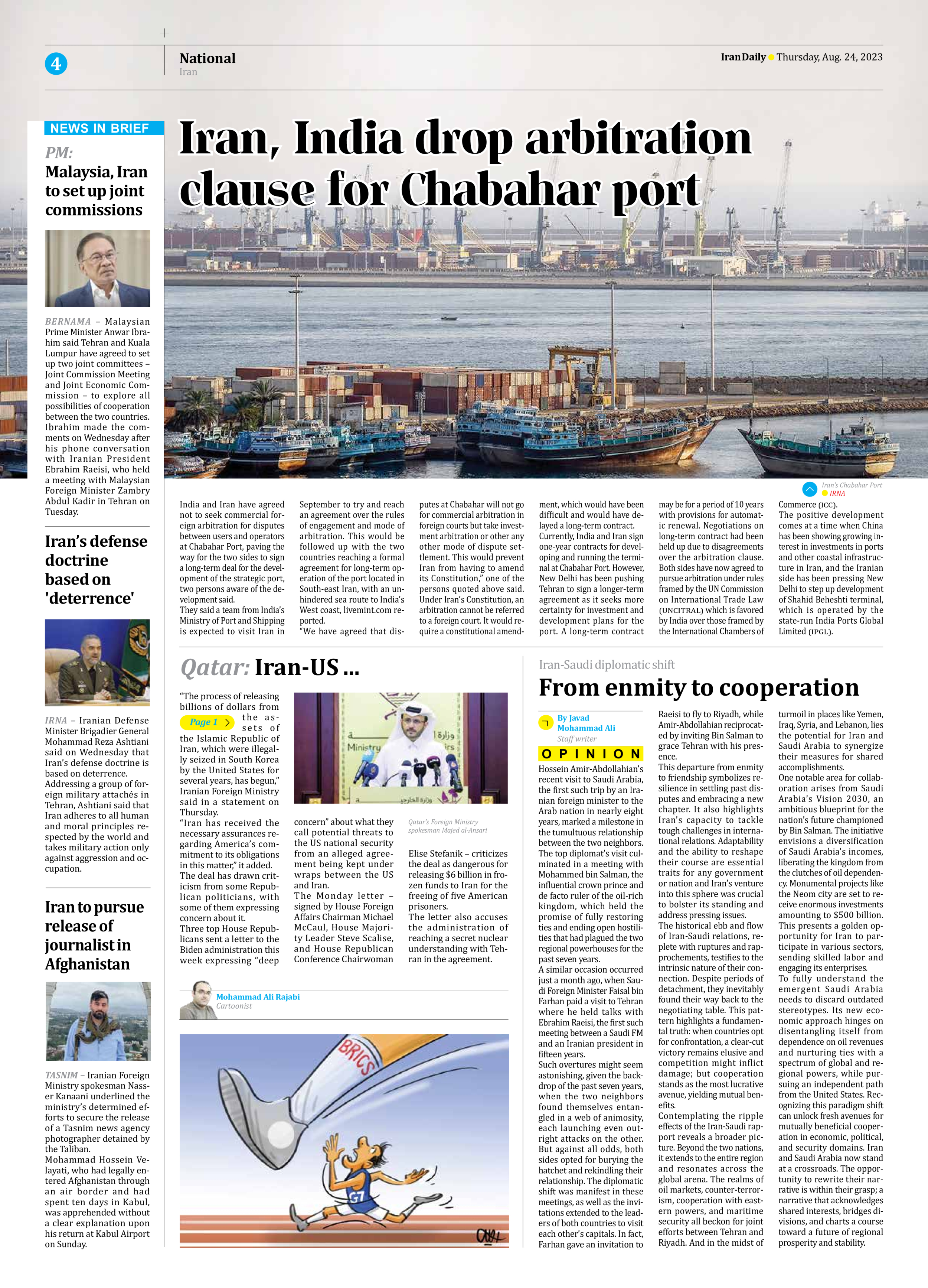
Iran-Saudi diplomatic shift
From enmity to cooperation
By Javad Mohammad Ali
Staff writer
Hossein Amir-Abdollahian’s recent visit to Saudi Arabia, the first such trip by an Iranian foreign minister to the Arab nation in nearly eight years, marked a milestone in the tumultuous relationship between the two neighbors. The top diplomat’s visit culminated in a meeting with Mohammed bin Salman, the influential crown prince and de facto ruler of the oil-rich kingdom, which held the promise of fully restoring ties and ending open hostilities that had plagued the two regional powerhouses for the past seven years.
A similar occasion occurred just a month ago, when Saudi Foreign Minister Faisal bin Farhan paid a visit to Tehran where he held talks with Ebrahim Raeisi, the first such meeting between a Saudi FM and an Iranian president in fifteen years.
Such overtures might seem astonishing, given the backdrop of the past seven years, when the two neighbors found themselves entangled in a web of animosity, each launching even outright attacks on the other. But against all odds, both sides opted for burying the hatchet and rekindling their relationship. The diplomatic shift was manifest in these meetings, as well as the invitations extended to the leaders of both countries to visit each other’s capitals. In fact, Farhan gave an invitation to Raeisi to fly to Riyadh, while Amir-Abdollahian reciprocated by inviting Bin Salman to grace Tehran with his presence.
This departure from enmity to friendship symbolizes resilience in settling past disputes and embracing a new chapter. It also highlights Iran’s capacity to tackle tough challenges in international relations. Adaptability and the ability to reshape their course are essential traits for any government or nation and Iran’s venture into this sphere was crucial to bolster its standing and address pressing issues.
The historical ebb and flow of Iran-Saudi relations, replete with ruptures and rapprochements, testifies to the intrinsic nature of their connection. Despite periods of detachment, they inevitably found their way back to the negotiating table. This pattern highlights a fundamental truth: when countries opt for confrontation, a clear-cut victory remains elusive and competition might inflict damage; but cooperation stands as the most lucrative avenue, yielding mutual benefits.
Contemplating the ripple effects of the Iran-Saudi rapport reveals a broader picture. Beyond the two nations, it extends to the entire region and resonates across the global arena. The realms of oil markets, counter-terrorism, cooperation with eastern powers, and maritime security all beckon for joint efforts between Tehran and Riyadh. And in the midst of turmoil in places like Yemen, Iraq, Syria, and Lebanon, lies the potential for Iran and Saudi Arabia to synergize their measures for shared accomplishments.
One notable area for collaboration arises from Saudi Arabia’s Vision 2030, an ambitious blueprint for the nation’s future championed by Bin Salman. The initiative envisions a diversification of Saudi Arabia’s incomes, liberating the kingdom from the clutches of oil dependency. Monumental projects like the Neom city are set to receive enormous investments amounting to $500 billion. This presents a golden opportunity for Iran to participate in various sectors, sending skilled labor and engaging its enterprises.
To fully understand the emergent Saudi Arabia needs to discard outdated stereotypes. Its new economic approach hinges on disentangling itself from dependence on oil revenues and nurturing ties with a spectrum of global and regional powers, while pursuing an independent path from the United States. Recognizing this paradigm shift can unlock fresh avenues for mutually beneficial cooperation in economic, political, and security domains. Iran and Saudi Arabia now stand at a crossroads. The opportunity to rewrite their narrative is within their grasp; a narrative that acknowledges shared interests, bridges divisions, and charts a course toward a future of regional prosperity and stability.







